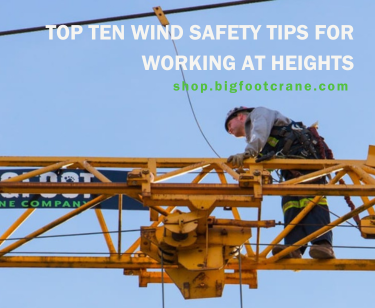Working at heights can be dangerous, particularly when wind speeds fluctuate. Ensuring safety is of high importance for crane operators and construction workers. Follow these best practices to maintain a secure job site, regardless of the weather conditions.
1. Secure All Tools and Materials
Strong gusts can lead to loss of balance and can blow tools and materials off platforms. Always secure objects and tools when not in use to prevent accidents and ensure stability.
2. Utilize a Wind Meter
Ground-level wind readings are not sufficient for height safety. Wind speeds can increase significantly at higher elevations. Use our NAVIS wind meters for accurate readings and to understand how your site is affected by wind currents.
3. Monitor Gusts Carefully
Gusts can be unpredictable and much stronger than average wind speeds. Regularly monitor wind conditions with a reliable wind meter and pause operations if gusts are too strong to ensure worker safety.
4. Handle Flat Materials with Care
Flat materials like plywood can act like sails in the wind. Carry them horizontally and in pairs on windy days and secure them tightly when not in use to prevent accidents.
5. Avoid Reacting to Blowing Objects
Resist the urge to catch blowing objects immediately. Instead, take a moment to ensure it is safe to retrieve them to prevent losing balance or getting distracted by other hazards.
6. Wear Appropriate Personal Protection Equipment (PPE)
Proper PPE can prevent injuries. Wear eye protection to shield against dust and debris and ensure your hard hat is securely fastened to avoid it blowing off.
7. Always Wear a Harness
Wearing a harness at heights of 1.5 meters and above is crucial, as a significant number of fatal falls occur at low heights. Ensure it is securely fastened for maximum safety.
8. Avoid Creating Solid Covers
Creating shelters with materials like tarp or plywood can be dangerous in high winds. If necessary, cut holes in the cover to allow wind to pass through, reducing the risk of it being torn away.
9. Know When to Cease Operations
Stopping work due to high winds can prevent injuries and save lives. Use guides like the Wilkins Safety Group’s Beaufort Scale Safety Guide to determine when it is unsafe to continue working.
10. Inspect Structures Regularly
After strong winds, inspect scaffolding, platforms, and anchor points to ensure they are secure and have not been compromised. This will help prevent falls or collapses.
For more detailed information and to shop our range of wind meters, visit shop.bigfootcrane.com.













